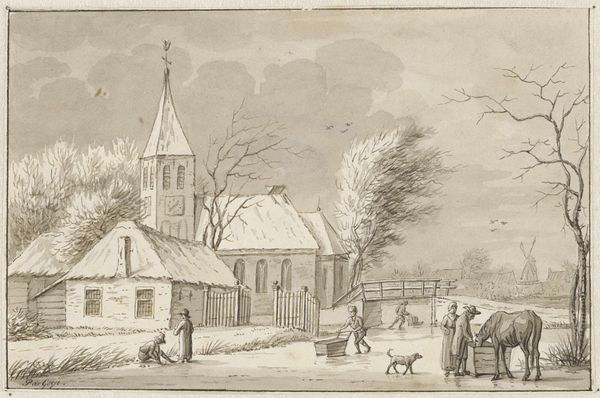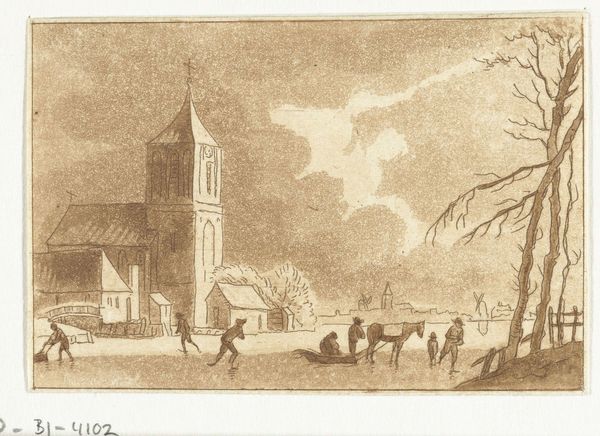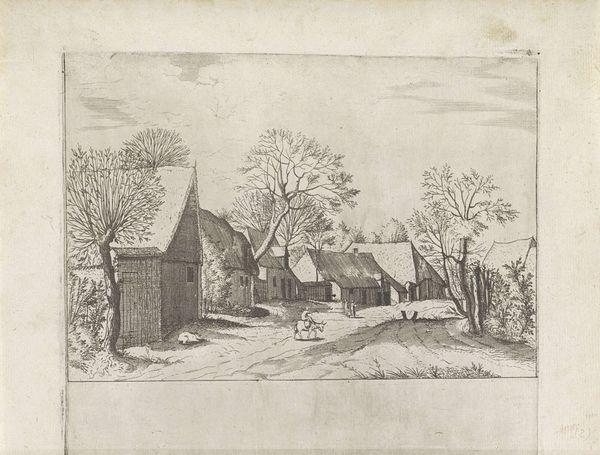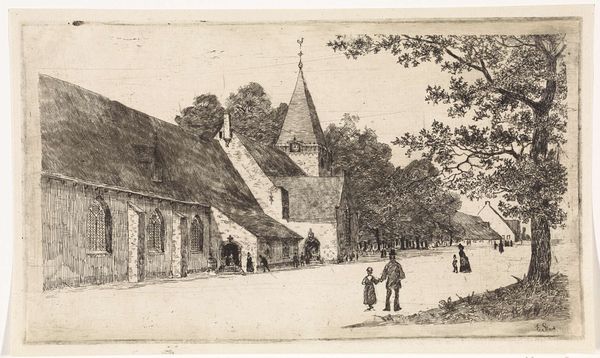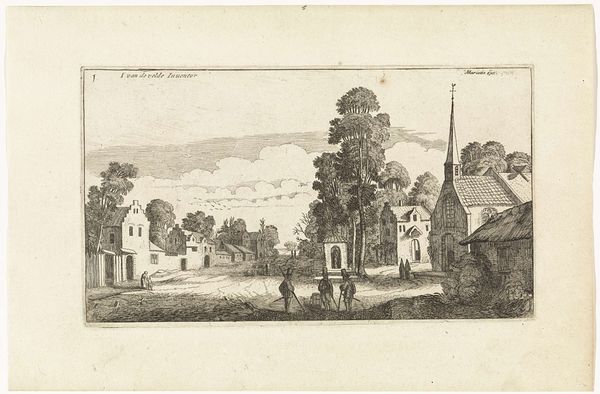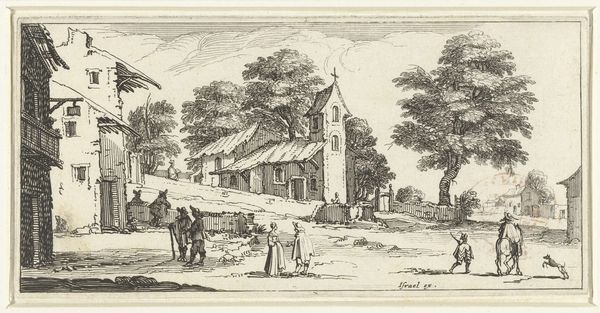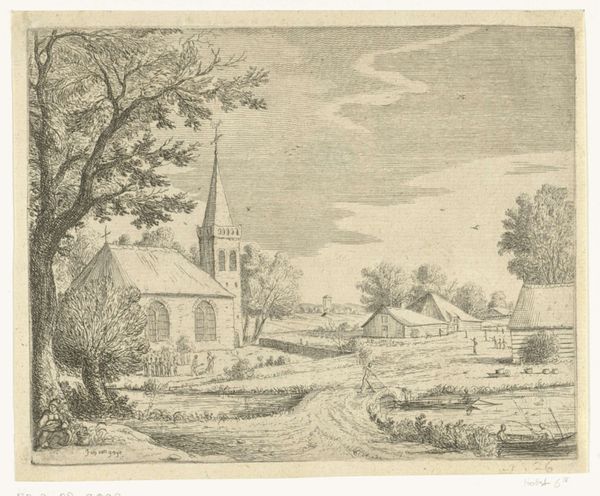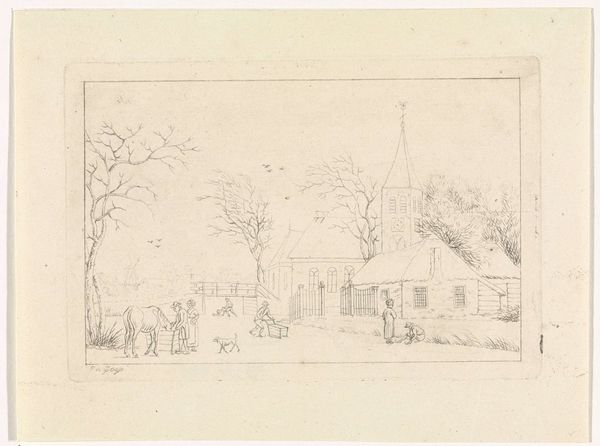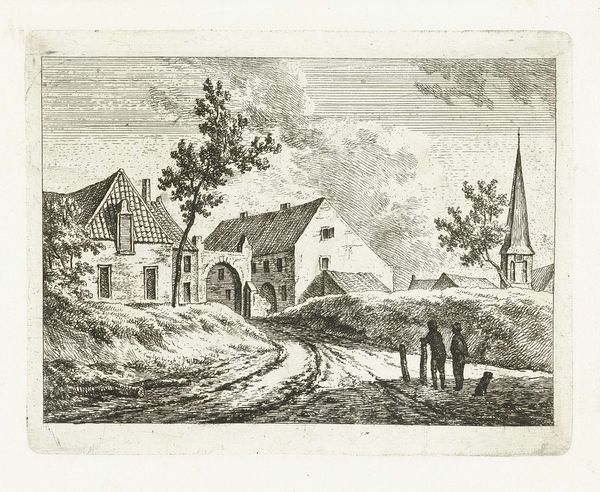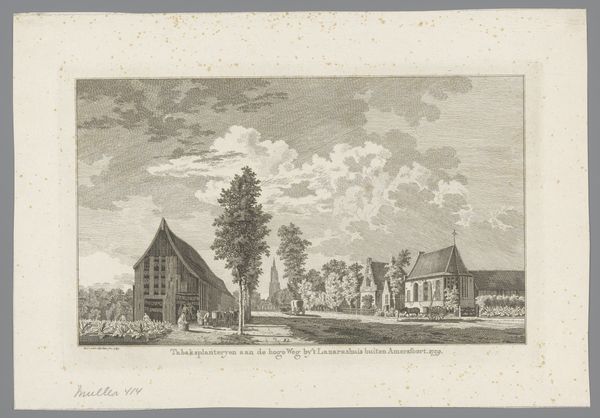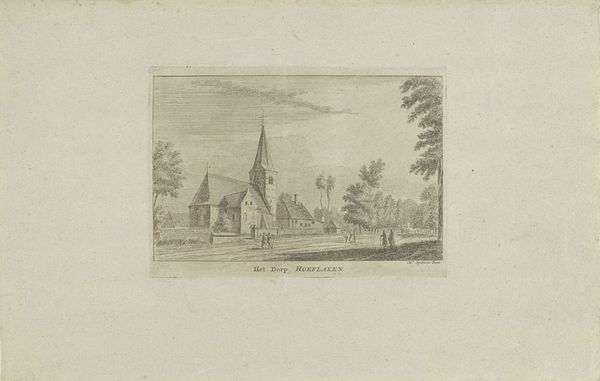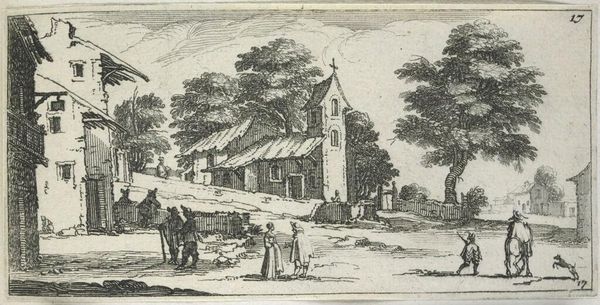
drawing, print, etching
#
drawing
# print
#
etching
#
old engraving style
#
landscape
#
etching
#
romanticism
#
genre-painting
Dimensions: width 89 mm, height 130 mm
Copyright: Rijks Museum: Open Domain
Editor: This is Pieter de Goeje’s "Winter Landscape with a Church and a Frozen River," created sometime between 1789 and 1859, using drawing, printmaking, and etching techniques. The linear details give it this old engraving look. I find its stillness very captivating. What do you see in this piece? Curator: Observe how the artist manipulates line weight and density to create depth and atmosphere. The etched lines defining the clouds, for example, are softer and more diffused compared to the crisp, deliberate strokes delineating the church and figures. Notice the orthogonals in the architecture which draw the viewer’s eye back in space, as well as how De Goeje organizes and balances light and dark across the composition. It’s about the inherent relationships. How does the symmetry strike you? Editor: I guess it's subtle, like a reflection in the ice, anchoring both sides with a certain tonal balance of shapes? I mean the church and the windmill seem so different. Curator: Precisely. This echoes and enhances the composition while also complicating it through a disruption of mirroring – each half possesses unique pictorial objects to sustain your visual analysis. In this image, can you interpret other such dichotomies? Editor: Well, there's a natural-versus-manmade thing going on... And that etched borderline makes you focus on only the structure inside the image. Curator: True. It acts as both a frame and a conceptual barrier, reinforcing our attention on the formal elements contained within its borders. An elegant method to highlight this detailed, structural landscape, would you agree? Editor: Absolutely. I hadn't considered the implications of something as simple as that framed edge! I’m definitely seeing the landscape differently now. Curator: Indeed. It encourages close inspection of every form, inviting speculation on how it interrelates. And there is always something else to discover when the structure takes center stage.
Comments
No comments
Be the first to comment and join the conversation on the ultimate creative platform.
